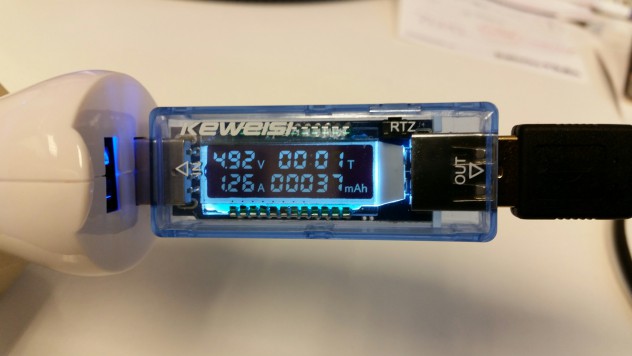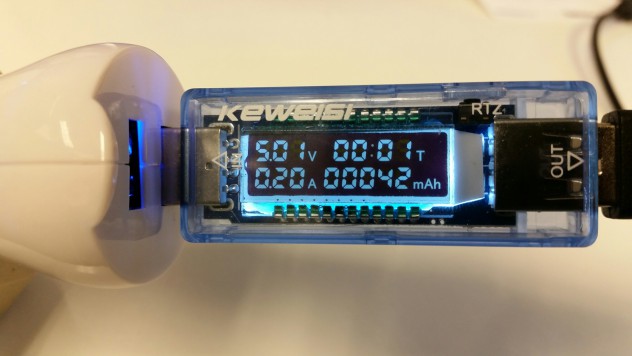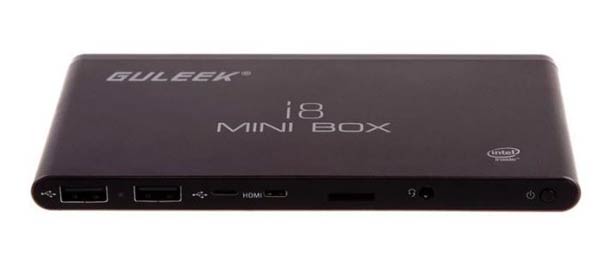Powering an office using USB
In early 2015 I set about an ambitious goal: Convert a medium-large size business into one giant USB hub. Several months later, this mission has been accomplished and now the numbers are starting to trickle in so I wanted to share just a few of them as it will hint at what the near future will look like for offices everywhere.
The problem: Workstations have consistently floated around the same price point, but their workload is far less intense than years prior. Everything is web/cloud based, applications in general run smoother and have less hardware demand, and the amount of physical storage space required in a domain environment is negligible since everything should be server based. Traditional workstations have at least four electric motors in them: Hard drive, CPU fan, case fan, PSU fan. Pair that with heat dissipation, power consumption, and physical bulk size — workstations are out of date!!
The bigger problem: Tablets are for kids and airplane layovers. Actual productivity on a capacitive touch input and small screen is not even measurable compared to an ergonomic setup consisting of keyboard/mouse/monitor. Simply put, you can’t just replace a workstation for a simple tablet.
What now?
Enter the TW700 from MicroCenter. A sub $70 Windows 8.1 computer that runs full applications, a year O365 license, and it fits in your jean pocket. It has no moving parts, emits no heat, and has a FULL SIZE USB port in addition to a MicroHDMI port. At first glance the full size USB2.0 port is probably only used for the occasional thumb drive to copy an Excel document or two, however if you think creatively enough, this one port is the gateway to a full workstation experience.

The workstations I converted required six USB ports to accommodate every peripheral. These workstations required a powered USB hub. I believe you can get away with not having externally powered hubs, but for anything over four ports, I would highly recommend it.
Here’s your cost breakdown between the two form factors:
Tablet
1 – TW700 = $47 (*Open Box is just as good as new)
1 – USB Hub = $3-11 (Depends on amount of ports needed)
1 – USB-To-Ethernet = $1.11 (eBay)
1 – MicroHDMI-to-HDMI cord = $3-4 (eBay)
Traditional Workstation
1 – HP/Dell SM Business Workstation = $130-450 (Depending on processor and age)
— or —
1 – HP/Dell AIO = $399-599 (Lower end Intel processor)
Let’s talk power consumption:
Tablet (with accessories attached, no monitor)
2.1W idle
Workstation (no monitor)
55-65W idle – average
The amount of workstations I migrated amounted to a drop of just under 2400W meaning the following:
Old Workstation Use (18hrs/day) = $1892.16/yr (Xcel Energy, MN)
Tablet Workstation (24hrs/day) = $135.605/yr (Xcel Energy, MN)
The total tablet installation cost hit around $2700 after some unexpected surprises (which I’ll get into in a second) but because these tablets have no moving/wearable parts, they are expected to last considerably longer based on daily use. If one dies, it’s less than $50 to replace. That’s the cost of one hard drive on a traditional workstation.
What this means is that in two years I will have made back the cost to upgrade every workstation to Windows 8.1 and a computer that boots in less time than it took to write this sentence. Excel opens in about a third of a second as well.
SOME CONSIDERATIONS
– KNOW THE NETWORK/DOMAIN — Converting to a setup like this requires significant research on a company’s daily activities and future.
– KNOW THE HARDWARE REQUIREMENTS — I chose a 1GB RAM and 16GB HDD model because everything is terminal service based. At least that is to say I converted everything to a terminal environment for a number of reasons. IT Admins who have been around the block remember thin clients. I’m basically doing the same, but at a third of the cost and leave myself open for future applications that require full Windows to run. MicroCenter sells a $65 Open Box / $90 New version of this tablet that has 2GB RAM / 32GB HDD which will better multitask core applications.
– KNOW THE POWER
Let’s go back to power for a second. In the initial testing phase of this deployment, I occasionally would scratch my head when a tablet would somehow lose battery capacity ever so slowly while on. The more the tech industry turns everything into USB power, the more attention to detail is required. Most charging cords cannot handle 2.1A. More so, some fail at producing 1A! In my tests, I’ve determined that not all 24AWG cables (1-10ft) are created equal. Just because it has 24AWG for power and potentially 28AWG for data, the type of copper (or lack thereof) makes a difference.
The photos below illustrate the differences between one 24AWG charging cable connected to a source vs another cable on the same source


This issue is only going to get worse over the next few years. A new type of micro USB connector will likely come out and average amperage will rise again at a cost to the consumer, but until then be incredibly wary over the choice of USB charging cord AND wall adapter.
——-
Probably the most important question is why I chose to use a tablet [that I later disabled all “tablet” features on and mounted under and behind desks out of sight] rather than simply buying a micro PC like this one…

My choice all came down to price. I bought in bulk at the beginning of the year for $47/ea and even while I write this (Sept 2015) prices on the next best option are still at least double if not over $120 for something that has the same circuit and software. Still though, at less than $150/ea for a workstation replacement it will inevitably be a trend in the very near future. VMware VDI and other visualization software was written exactly for these devices. My advice is to begin sandbox testing this technology now.